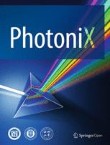当期目录
2021年 第2卷 第1期
显示方式:
2021,
2(1) doi: 10.1186/s43074-020-00023-9
摘要:
2021,
2(1) doi: 10.1186/s43074-021-00024-2
摘要:
2021,
2(1) doi: 10.1186/s43074-021-00025-1
摘要:
2021,
2(1) doi: 10.1186/s43074-021-00028-y
摘要:
2021,
2(1) doi: 10.1186/s43074-021-00026-0
摘要:
2021,
2(1) doi: 10.1186/s43074-021-00027-z
摘要:
2021,
2(1) doi: 10.1186/s43074-021-00029-x
摘要:
2021,
2(1) doi: 10.1186/s43074-021-00030-4
摘要:
2021,
2(1) doi: 10.1186/s43074-021-00031-3
摘要:
2021,
2(1) doi: 10.1186/s43074-021-00035-z
摘要:
2021,
2(1) doi: 10.1186/s43074-021-00032-2
摘要:
2021,
2(1) doi: 10.1186/s43074-021-00036-y
摘要:
2021,
2(1) doi: 10.1186/s43074-021-00041-1
摘要:
2021,
2(1) doi: 10.1186/s43074-021-00042-0
摘要:









